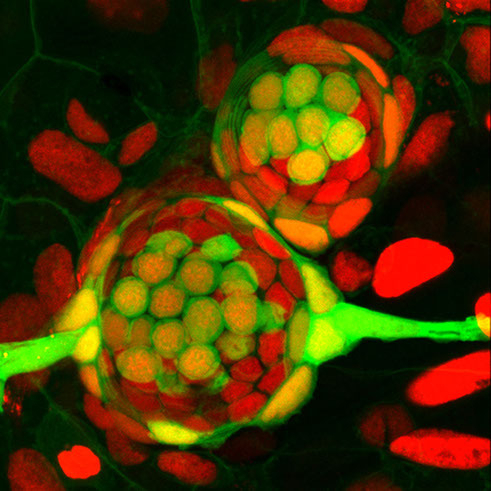The Piotrowski Lab focuses on development and regeneration of the lateral line sensory system in zebrafish. Research into this system offers growing insight into human sensory organ development and disease, including why individuals lose their hearing as they age.
The lateral line develops from a group of around 100 cells, the primordium, which forms behind the fish's ear, migrates toward the tail tip, and deposits sensory organs, called neuromasts, along the way. Hair cells within neuromasts extend cilia, which look like tiny hairs, to detect water movement, enabling fish to orient themselves, find prey, and avoid predators in the water. These hair cells are remarkably similar to those in mammalian ears that detect sound waves and enable hearing.
The Piotrowski Lab’s research has developed the lateral line system into a powerful model and has identified several genes required for the coordinated migration of groups of cells and uncovered how signaling pathways interact to subdivide the primordium into leading and trailing regions. This aids our understanding of cancer biology, as several human cancers invade tissues as groups of cells.
The Piotrowski Lab investigates how zebrafish sensory hair cells develop and regenerate after injury. In mammals, once hair cells die from aging or after prolonged noise exposure, their inability to regenerate results in permanent hearing loss, in contrast to species who continually generate new hair cells. The team is hopeful their research will elucidate how zebrafish hair cells regenerate to provide clues for triggering hair cell regeneration in mammals, paving the way for treatments for hearing loss.






